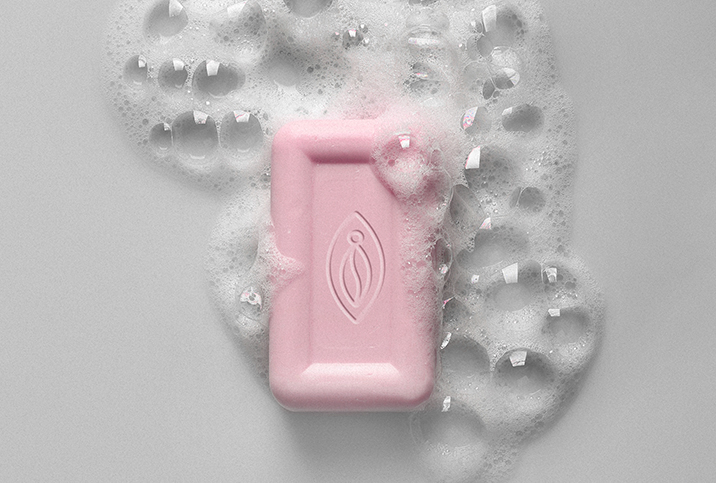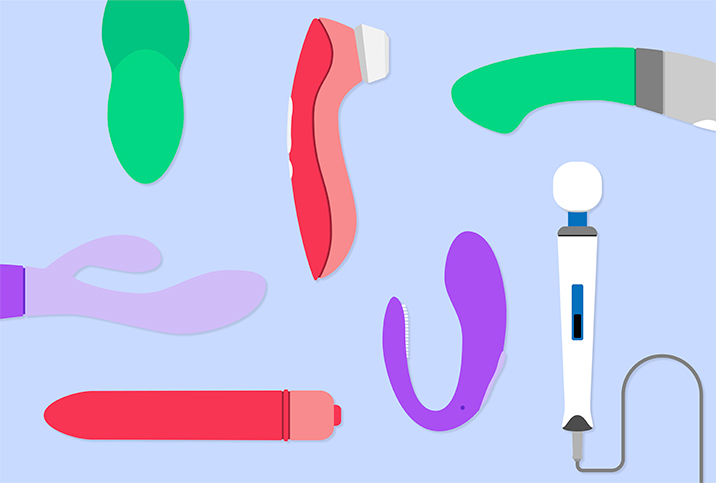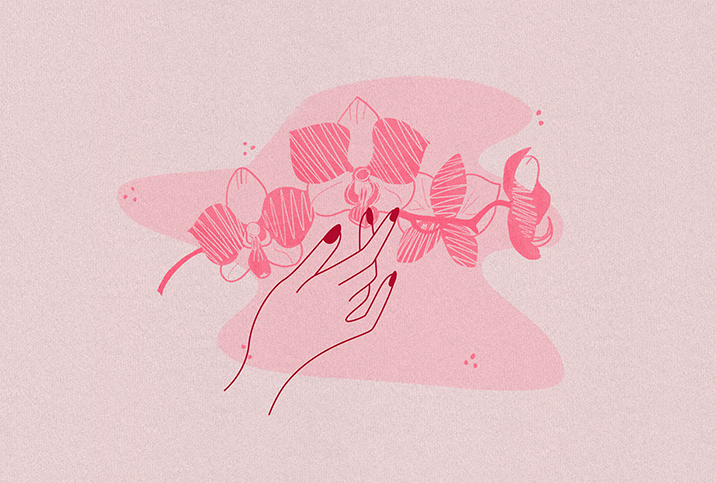Exploring Vaginal Masturbation

Masturbation is the practice of sexually stimulating yourself, often to the point of orgasm. While masturbation, especially vaginal masturbation, is only a relatively recent topic of public discussion due to the overwhelming stigma surrounding women's pleasure, it is a very common and time-old practice. Many people consider the solo act of masturbation an essential part of their personal life and mental and physical health, as well as their partnered-sex life.
The hard facts
Exact data on masturbation is hard to pin down due to the fallibility of sample populations and self-reporting. However, one report on masturbation by TENGA, a Japanese sexual health brand, estimates that 84 percent of Americans masturbate, and more than half of Americans who masturbate do so at least once a week. Most people in relationships masturbate on their own, indicating that masturbation does not operate as a stand-in for partnered sex.
Approximately 86 percent of Americans identify as masturbation-positive and view the practice as a normal part of life. The TENGA report states that 8 in 10 Americans view masturbation as a form of self-care, and the leading reason that respondents masturbate is for relaxation and stress relief.
Half of U.S. adults report having used a sex toy for masturbation before, and more than half of respondents indicate that they still use toys for solo sex on a regular basis.
Self-pleasure history
Masturbation is as old as sex itself—a 28,000-year-old penetrative sex toy was unearthed in Germany in 2005, and a clay figurine from 4000 B.C. Malta depicts a woman masturbating. The 2nd-century Roman doctor Galen prescribed "pelvic massage" to treat a variety of ailments, most notably hysteria. Well into the 20th century, doctors would commonly diagnose hysteria in women with a variety of symptoms that did not fit the diagnostic criteria for other conditions at the time; it was often a way of pathologizing a woman's behavior as a means of control. The condition was only officially eliminated from the DSM in 1980.
The administration of pelvic massage eventually led to the 1869 invention of the steam-powered "manipulator," essentially the first-ever vibrator. While masturbation continued to be mostly a taboo subject due to popular beliefs about the morality of sexual pleasure (especially in women) throughout the 20th century, work by Alfred Kinsey in the 1940s and '50s attempted to validate masturbation as a normal, healthy part of human sexuality.
Even though more people than ever are talking candidly about masturbation and sex as a huge part of the human experience, it still holds some of the same old connotations and feels like a taboo or shameful action. Most American sex education curriculums barely touch on masturbation, and some don't discuss it at all. Further open conversation and research will allow more people to explore the practice and feel comfortable in their own sexuality.
Health benefits
Masturbation provides benefits for the mind and body far beyond sexual pleasure. Even if you don't orgasm while masturbating, setting aside time in your schedule to focus only on yourself and your own pleasure can relieve stress, raise self-confidence and improve libido.
Orgasming has a slew of health benefits related to the brain chemicals and muscles associated with masturbation. The endorphins that your brain releases during orgasm are natural stress and pain relievers, meaning masturbating may be able to improve mild pain from menstrual cramps, ovulation cramps or headaches. Endorphins help your brain and body feel less stressed and contribute to the calming effect that the simple act of masturbation itself can have.
The muscle exertion and physical activity that masturbation provides can also boost your cardiovascular health and strengthen your pelvic floor. The release of oxytocin that accompanies orgasm coupled with physical exertion can help you get a better night's sleep.
Exploration
Masturbation is an excellent way to acquaint yourself with your body and feel comfortable in your own skin. It helps you learn more about what feels good to you, so you can make your masturbation sessions even better and improve your sex life. Mutual masturbation with a partner can be a hot way to bring masturbation into the bedroom, and visually show your partner what you like.
If you're nervous about masturbating or don't know where to start, it might be easiest to start by using your fingers before buying a toy. Most people find the most pleasure by stimulating the glans clitoris, which is packed with more than 8,000 super-sensitive nerve endings. The clitoris is located above the urethra and vagina within the clitoral hood, the uppermost part of the labia minora. Many people find that their clitoris is too sensitive for direct stimulation, and opt to stimulate either the surrounding areas or above the labia.
The clitoris nerves actually extend around the vaginal canal and toward the anus, and are composed of internal erogenous zones like the G-spot or A-spot. The G-spot refers to an area 2 to 3 inches within the vagina on the anterior (front) wall that can feel intensely pleasurable to stimulate. To find this erogenous zone, insert one or two fingers into your vagina and press forward, toward your belly button. It is often textured or spongy to the touch, and pressing it may give you the slight urge to pee. The A-spot typically lies a few inches deeper than the G-spot and can lead to extra intense orgasms that radiate through the pelvis and down the legs, and stimulate the production of extra natural wetness. It's easier to reach on your own using a penetrative toy.
If you're seeking a full-body orgasm, try stimulating both of these areas at the same time. If it doesn't feel good right away, don't worry. Everyone is different, and learning exactly what feels most pleasurable to you won't necessarily happen overnight. Be patient with yourself and try to avoid feeling frustrated; masturbation can be a learning process and help you discover what feels best to you.
Masturbation tips
Find your clitoris by feeling for a small, pea-sized bump with two or three fingers. Try out different movements and pressures until you find something that feels good to you. Don't be discouraged if you can't find your rhythm right away. You can experiment by stimulating different external erogenous zones like the nipples or perineum (the stretch of skin between your vagina and anus).
If one position isn't working for you, try switching it up. Some people like to masturbate on their back, while others enjoy the pressure of lying stomach-down with a pillow propped under their hips or between their legs. Position your body in a way that allows you to comfortably reach wherever you're stimulating, or experiment with a position you're not used to if you're feeling adventurous.
Try stimulating your clitoris while penetrating yourself with fingers or a toy. You can use as many or as few fingers as feels good to you, either directly on the clitoris or adjacent to it. Start slow and focus on your own pleasure, letting your fingers or toy explore and hone in on wherever and whatever makes you feel the best.
Whether you're stimulating your clitoris with your fingers or using an internal sex toy, lube is a great way to make masturbating feel more comfortable and extra pleasurable. Water- or silicone-based lube can make your movements feel much smoother and supplement natural wetness. Before using lube with a sex toy, make sure that the lube you use is compatible with the toy and won't degrade the material.
Self-pleasuring toys
Many people prefer to masturbate without the use of sex toys, but other people regularly use sex toys when they masturbate. While they are by no means a requirement for masturbation, many different kinds of sex toys exist to enhance or aid your masturbation sessions and help you intensify or reach orgasm.
Classic dildos or penetrative toys are great ways to try different levels of internal stimulation; they range in size, appearance and texture. Some have the realistic appearance of a penis, while others come in neon colors with ridges or textured surfaces to enhance pleasure. They can be straight or curved to stimulate internal erogenous zones, stiff or more malleable, slim or thick, short or long; whatever feels best to you, there's a dildo in that shape, size and color.
Vibrators are another common kind of sex toy that people with vaginas use to masturbate. Some vibrators, like the classic wand or vibrators that use suction, are solely for use on the clitoris and external genital areas. Other toys like rabbits and G-spot stimulators are designed for deeper vaginal or anal penetration during solo play. Vibrators are a great way to enhance masturbation or more easily reach orgasm. They're also an approachable way to experiment with solo penetration and reaching areas that fingers might not be able to stimulate enough.
If you're looking to explore anal pleasure or already know you enjoy it, anal toys like butt plugs are great ways to incorporate anal orgasm into masturbation. They come in all sizes, shapes, colors and textures, so you can experiment with different types of anal stimulation. If it's your first foray into anal toys, make sure to get one with a flared end, use lots of lube and warm yourself up with foreplay (or an orgasm) to make it feel as comfortable as possible.
Conclusion
Masturbation is a totally normal part of human sexuality and a great way to relax, feel good and learn more about your body and your desires. There is no "right" way to masturbate, and different techniques feel good for different people. Experimenting with various erogenous zones, sex toys and positions can help you explore your own pleasure and have amazing orgasms both on your own and with a partner.


















